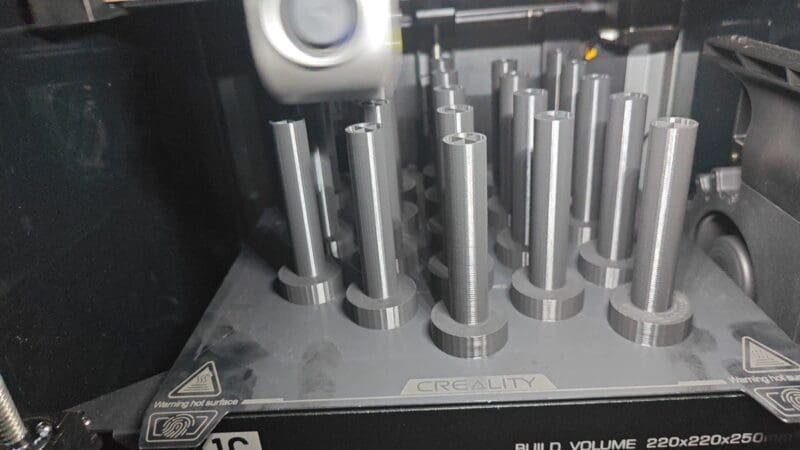Troubleshooting Guide: Bambu AMS Not Detecting Filament

Introduction
The Bambu Lab AMS (Automatic Material System) is an intelligent system designed to ensure smooth filament feeding and automatic mid-print filament switching. However, there may be instances where the Bambu AMS not detecting filament, causing interruptions in the printing process.
In this guide, we will explore the common causes of filament detection issues with the Bambu AMS and provide step-by-step solutions to help you resolve these problems. Whether you are a beginner or an experienced user, this guide will equip you with the knowledge and tools to overcome filament detection challenges and get back to seamless 3D printing.
Please note that troubleshooting the Bambu AMS requires some technical understanding of the system and its components. If you are unsure or uncomfortable with performing the suggested solutions, we recommend reaching out to the Bambu Lab Support Team or consulting with an experienced technician.
Now, let’s dive into the common causes of filament detection issues with the Bambu AMS and explore the solutions to get your 3D printer back up and running smoothly.
Common Causes of Filament Detection Issues
When using the Bambu Lab AMS (Automatic Material System), you may encounter issues with filament detection. This can be frustrating, but understanding the common causes can help you troubleshoot and resolve the problem.
- Filament Feeder Issues
- Feeder Hall Switch Check:
- Symptom: The feeder does not detect filaments after insertion.
- Action: Observe the feeder LED light when inserting the filament. A functioning hall switch will turn the LED light on. If the light doesn’t activate, the hall switch might be faulty.
- Pro Tip: Sometimes, simply reinserting the filament can reset the sensor. Try this a couple of times to see if it resolves the issue.
- Feeder Hall Switch Check:
- Feeder Motor Functionality
- Symptom: The feeder LED is on, indicating filament detection, but the filament doesn’t feed into the AMS.
- Action: Document this behavior with a video and reach out to Bambu Lab’s after-sales service for support. This could indicate a malfunctioning feeder motor.
- Pro Tip: Ensure that there’s no physical obstruction in the feeder path that could prevent filament movement.
- AMS Internal Filament Hub Troubleshooting
- Symptom: Filament is not pushed out of the PTFE tube, despite the feeder working correctly.
- Action:
- Pro Tip: Perform this check multiple times to confirm consistent functionality.
- Buffer Signal Issues
- Symptom: No response from the feeder motor when attempting to load filament.
- Action: This could be a problem with the buffer signal. Refer to the Bambu Lab Wiki for specific troubleshooting steps related to buffer signal issues.
- Pro Tip: Check the connections and cables related to the buffer system, as loose connections can often cause such issues.
- Extruder-Related Challenges
- Extruder Hall Switch Issues:
- Symptom: Filament reaches the extruder but is not detected.
- Action: Manually feed the filament to the extruder and check the response of the extruder hall switch. For different printer models, the method to check the switch varies, so refer to the specific instructions for your model.
- Pro Tip: Clean any debris from the extruder area, as this can sometimes interfere with the hall switch’s operation.
- Extruder Clogs:
- Extruder Hall Switch Issues:
- Filament Unloading Failures
- Symptom: Filament does not exit the extruder during unloading.
- Action: This could indicate an extruder clog or an issue with the extruder hall switch. First, check for and clear any clogs. If the problem persists, troubleshoot the extruder hall switch as outlined above.
- Pro Tip: When removing clogs, be gentle to avoid damaging the internal components of the extruder.
- Spool and Filament Tangle Checks
- PTFE Tube Connector Check
- Active Support Sleeve Anomalies
- Symptom: Noticeable noise during AMS operation, indicating potential issues with the active support sleeve.
- Action: Check if the active support sleeve is fully seated in the AMS main frame. An improperly seated sleeve can prevent the spool from rotating correctly and cause unloading failures.
- Pro Tip: Listen for unusual sounds when the AMS is operating. They can often indicate mechanical issues that are otherwise not visible.
- Dealing with Special Filaments
Conclusion
Dealing with filament detection issues in the Bambu Lab AMS can be complex, but a systematic approach to troubleshooting can help identify and resolve most problems. Regular maintenance, careful observation of the AMS components, and a good understanding of the printer’s mechanics are essential for smooth operation. If these steps do not resolve the issue, reaching out to Bambu Lab’s after-sales service or consulting with experienced technicians is recommended.
DISCLOSURE: THIS POST MAY CONTAIN AFFILIATE LINKS, MEANING I GET A COMMISSION IF you DECIDE TO MAKE A PURCHASE THROUGH MY LINKS, AT NO COST TO YOU. PLEASE READ MY DISCLOSURE FOR MORE INFO.



